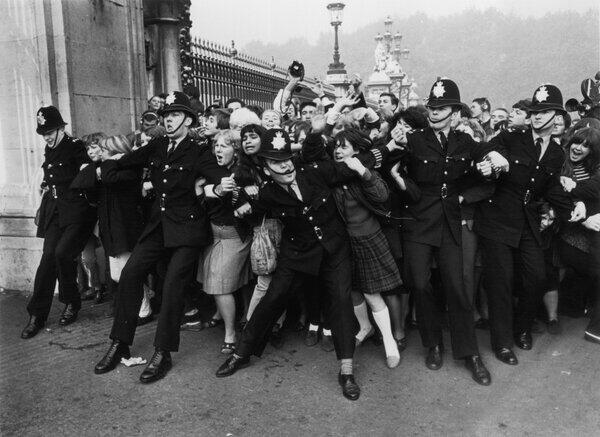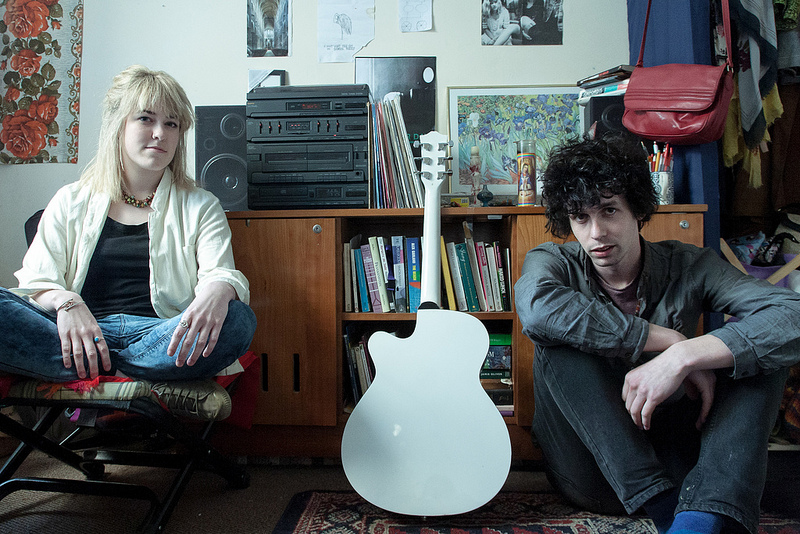In a recent interview with The Guardian, Kim Deal of The Breeders claimed that “misogyny is the backbone of the music industry.” The events of the past several months have started long overdue conversations about gender equality in creative industries. This misogyny does not stop with music industry professionals or artists, though. Female fans – especially those in their teens – are regularly subjected to sexist stereotyping and derision. Language of madness is frequently used to describe female fans. Fangirls are apparently “hysterical” most of the time – a term that harks back to the Ancient Greek notion of a uniquely female illness, caused by the meanderings of the pesky uterus around a woman’s body.
The term “fangirl” is a derogatory one. Used as a verb, it can apply to males or females who express their enjoyment of a cultural commodity in an overemotional – and therefore excessively “feminine” – fashion. Throughout history, female fans’ behaviour has been characterised as over-zealous and irrational. The stereotype of the male soccer fan who attends his favourite team’s games regularly, screams when they win and cries when they lose is a foil to the fangirl, but they do not get the same treatment in the media or in society. Male sports fans might be described as “crazy” with an of innocuous, college-party kind of fun connotation. A crazy fangirl is more akin to a fool or a lunatic.
Long before Beatlemania came Lizstomania, which saw ladies in Berlin and Paris expressing their admiration for the composer and pianist Lizst in unprecedented ways. Some threw flowers and others threw underwear at the virtuoso. The Beatles and Lizst have gone down in history as artists of huge cultural significance, so their female fans were certainly on to something. But things made by and enjoyed by women and girls are generally perceived as trivial and lacking in cultural value, and ultimately it is male approval that cements the reputation of an artist. The conflation of women’s enjoyment of music with their desire for the musician is pervasive. A boy who worships a rock star, memorises the lyrics to every song, and spends a fortune buying records and merchandise would usually be characterised as a budding young musician, inspired by a master of the craft. A girl who does the same is more than likely labelled a fangirl, obsessed with a celebrity. Patriarchy dictates that women are not meant to be loud or to take up space, so crowd of excited, screaming females is quite a threatening thing. When women’s bodies are sexualised and their expressions of pleasure reduced to lust or hysteria, their ability to disrupt patriarchal structures designed to control them is undermined. We need only think back to the women who were arrested at Knockanstockan in 2016 for baring their breasts to be reminded of how hypersexualised and politically problematic the female body is in patriarchal society.
Fandom is all about community, especially for those who do not belong in the dominant social group. The internet has had a major role to play in fan communities, and has allowed girls to create safe, creative and social spaces in which they can discuss and share art. They may be brought together on social media groups or fansites by a shared love of a male artist, but these fandoms are vibrant female networks. The world of fan fiction offers a glimpse at how young women subvert the heteronormative narratives sold to them by the music industry. The male teen idol is traditionally manufactured as a squeaky-clean archetype onto which girls can project their desires and fantasies. “Slash” fiction, which presents ostensibly straight real-life people or fictional characters in homosexual relationships, accounts for a substantial proportion of fan fiction written by young women on the internet. When these pieces of writing are shared within the fandom, they start conversations about girls’ ideas and identities. Rather than simply consuming and obsessing over the products of a global industry, these girls are adapting these cultural symbols to their private fantasies.
These online communities also have potential to make significant public and political statements. Back in 2015, One Direction fans from around the world banded together to get ‘No Control’, an album track from the boyband’s fourth album, to Number 1 on the Billboard Hot 100 Chart. The choice of song, with its overtly sexual lyrics, was a significant one. Fans called radio stations the world over, bought the track, and made videos to go with this unofficial release. For a day, the pop music world was hijacked by teenage girls who wanted to hear a song about a man describing being “powerless” with lust for a woman. These girls had balls. Despite being ridiculed and pathologised for liking the music they liked, they used their shared passion to give teenage pop music fans a voice. They proved that girls could be active participants in popular culture. Probably without even realising it, they were enacting the feminist adage of making the personal political.
Without the support of young female fans, countless of pop music’s most famous acts would never have enjoyed the success they did. The devaluation of women and girls as critical consumers is not just unspeakably unjust to the female sex – it also makes legitimacy a lot harder to attain for artists with a largely female fanbase. If society can start telling girls that their interests and passions are valid – and that they can express their enjoyment of music however they please – then a more equal future is surely possible. Eimear Hurley





